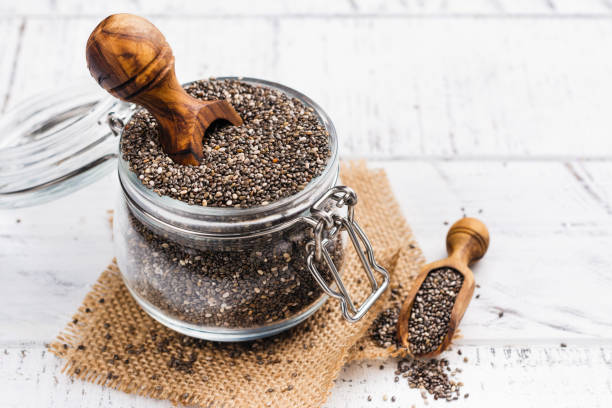Chia (Salvia hispanica) has rapidly evolved from a regional staple in Central and South America to a globally recognized superfood, underpinned by its strong nutritional profile and sustainable cultivation methods. In 2024, demand remains robust as consumers worldwide prioritize health and plant-based diets, propelling chia into diverse value chains including food, health supplements, cosmetics, and animal feed. The crop’s natural drought tolerance and low input requirements make it attractive for producers facing climate volatility and striving for organic certification—benefits now seized by leading exporters such as Australia, Mexico, and regions of Africa.
Recent price stability reflects an equilibrium between supply expansion and sustained demand from key importers in Europe, North America, and Asia. Despite stagnant prices observed in the European market, sentiment remains bullish amid persistent buyers’ interest and a steady velocity of trade. Chia’s minimal processing needs, strong storability, and versatile applications continue to underpin its reputation as a low-risk, high-value agricultural commodity. The outlook is further brightened by burgeoning opportunities for value-added products, especially in organic and fair trade segments. For current and prospective participants—from large-scale exporters to smallholder farmers—the chia market presents a rare blend of profitability, sustainability, and resilience.
Exclusive Offers on CMBroker

Chia seeds
black
99.95%
FCA 3.50 €/kg
(from NL)

Chia Seed
black
FCA 3.05 €/kg
(from NL)
📈 Prices & Market Sentiment
| Product | Type | Origin | Purity | Organic | Location | Delivery Terms | Last Price (EUR/kg) | Previous Price (EUR/kg) | Weekly Change (%) | Market Sentiment |
|---|---|---|---|---|---|---|---|---|---|---|
| Chia seeds | Black | UG | 99.95% | Yes | Dordrecht (NL) | FCA | 3.65 | 3.65 | 0.0% | Stable, Upward Bias |
| Chia Seed | Black | PY | – | No | Dordrecht (NL) | FCA | 2.69 | 2.69 | 0.0% | Stable, Moderate Interest |
🌍 Supply & Demand Dynamics
- Global demand is underpinned by strong consumer trends for “superfoods,” plant-based and organic ingredients, and omega-3 sources.
- Key exporters: Australia, Mexico, Uganda, Paraguay, Kenya.
- Major markets: Europe leads imports, followed by the U.S. and Asian health food segments.
- Value-added potential: Growth in chia oil, flour, and snack applications (notably in organic and fair trade certifications), supporting new revenue streams.
📊 Fundamentals & Market Drivers
- Low input requirements: Chia’s minimal need for irrigation and agrochemicals supports price stability and organic premiums.
- Crop resilience: Drought and heat tolerance make chia a reliable performer in variable climates and marginal land areas.
- Seasonal production: Major planting occurs in spring/early summer with harvest by late summer/autumn; storage is straightforward due to seed longevity.
- Processing simplicity: Seeds are dried and cleaned, with further value extraction in oil or ground forms for multiple industries.
⛅ Weather Outlook for Key Regions
- Australia: Mild to warm forecasts, low rainfall—supportive for chia maturation and harvest in Western Australia and Northern Territories.
- Mexico: Seasonally dry interspersed with scattered showers; conditions favorable, though some northern regions report minor hot/dry stress, which chia typically tolerates.
- Eastern Africa (Uganda/Kenya): Slightly above-average rainfall predicted, sustaining good soil moisture and yield expectations.
Weather impact: Chia’s climate resilience buffers against major weather risk; overall, yield forecasts are steady worldwide.
🌍 Global Production, Stocks & Trade Flows
| Country | Est. 2024 Output (kt) | Stock Level (kt) | Major Export Markets |
|---|---|---|---|
| Australia | 38 | 10 | Europe, U.S., Asia |
| Mexico | 25 | 5 | U.S., Europe |
| Uganda | 16 | 3 | Europe |
| Paraguay | 10 | 2 | Europe, U.S. |
| Kenya | 5 | 1 | Europe |
- Stocks: Remain comfortable across major exporters; little risk of sudden shortage.
- Supply chain: No significant disruptions; shipping and logistics stable for EU-bound product.
📆 Trading Outlook & Short-Term Forecast
- 📊 Current tone: Steady prices with upward bias for premium organic supply; volume remains active but balanced by solid inventories.
- 🔎 Watch points: Weather fluctuations in Mexico or unseasonal rains in Africa may cause local variations, but impact is limited due to chia’s climatic resilience.
- 🟢 Buyers: Secure forward contracts for organic/traceable supply ahead of seasonal demand spikes.
- 🟢 Sellers: Hold product for slight price appreciation in organic niche; explore value-added segments for margin enhancement.
- ⬆️ Traders: Monitor logistics, currency, and consumer trend data; hedge forward exposure as required.
📅 3-Day Regional Price Forecast (EUR/kg, FCA Dordrecht NL)
| Product | Current Price | Day 1 | Day 2 | Day 3 | Trend |
|---|---|---|---|---|---|
| Chia seeds (UG, Organic) | 3.65 | 3.65 | 3.68 | 3.68 | Stable/Up |
| Chia Seed (PY, Conv.) | 2.69 | 2.68 | 2.69 | 2.69 | Flat |
Conclusion: The chia market is well-supplied and fundamentally strong. Stable prices and robust demand—especially in the organic sector—suggest cautious optimism. Further upside may be limited but is likely for differentiated, value-added, or certified products.


